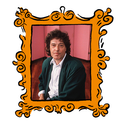
(Jonathan Cape, £12.99)
In Search of the Blues is a wrong-headed and silly book, but nonetheless a well-researched and interesting one—for blues buffs at least. In its curious petulance, it raises interesting questions about cultural conflicts and misunderstandings between white and black, rural and urban, sophisticate and primitive, male and female.
The blues is today part of our cultural wallpaper; but it was not ever thus. A small band of obsessive white collectors—men like James McKune, Alan Lomax and Sam Charters—were the first to notice, in the 1940s and 1950s, that many 78 rpm records marketed to poor rural southern blacks from the 1920s onwards were sublime works of art. Marybeth Hamilton draws vivid portraits of this group of eccentric loners—the so-called "blues mafia"—who first "discovered" Skip James, Son House, Charlie Patton and Robert Johnson. She brings to life their Meccas, such as Injun Joe's tiny shop on West 47th St in New York (to which I made frequent pilgrimages as a teenager).
Hamilton also traces the forebears of this group: folklorists like John Lomax (father of Alan) and Dorothy Scarborough, who collected "coon songs" in the turn-of-the-century south. Hamilton's thesis seems to be that the blues mafia, the supposedly hip men who later sold the world the music of Leadbelly and Robert Johnson, bear more than a passing similarity to these pioneering—if racist—folklorists.
But Hamilton seems not to have noticed that many of the recordings the blues mafia unearthed rank among the greatest works of American music. Early on, she describes herself reading, as a punk-obsessed teenager, Greil Marcus's classic account of American rock music, Mystery Train. Marcus's descriptions of ur-bluesman Robert Johnson, she writes, made her feel left out "and in some obscure way, affronted." For the next 15 years, she avoided listening to Johnson, remaining all the while fascinated by blues and its advocates. When she finally risked exposure to the great man's recordings, she heard "just a guitar, a keening vocal and a lot of surface noise." This is a bit like the author of a treatise on opera confessing at the outset that he doesn't really see the point of Mozart.
Hamilton brings forth sales figures to support her position. Johnson, House, James and Patton sold very little in their lifetimes, and were unknown to black audiences outside their Mississippi delta locales. Therefore, she contends, their Johnny-come-lately champions must have had curious and neurotic reasons for such over-the-top praise. This is a bit like accusing the critics who introduced Moby Dick to the world decades after the author's unmourned death of being members of a sinister cult.
In fact, the pattern that Hamilton describes—of artists being taken up in eras or cultures different to their own—is quite common. Little-known 1960s R&B singers were astonished by the "northern soul" circuit in Britain, which allowed them to earn a living performing songs that had flopped in America. The entire "world music" business is built on selling music to white middle-class consumers that is considered out of date in its native country. The acclaim poured on Chinese, Taiwanese and Korean filmmakers in the west is mocked by the deafening silence that greets most local productions in those places.
Hamilton also neglects to mention that equally intense rural artists, such as Blind Lemon Jefferson, sold hundreds of thousands of 78s to black buyers in the 1920s before the depression put an end to the "race records" boom. Throughout the 1930s, black tastes—along with black demographics—shifted in an urban direction. Is Jefferson to be considered better than the younger Johnson because he sold more records? Why does Hamilton ignore the gigantic influence—and modern-day sales figures—that Robert Johnson has?
More intriguing is the iceberg whose tip she examines so closely: the domination of the worldwide music industry by Afro-American styles and rhythms, if not performers. Hamilton's blues mafia nerds were not weird one-offs, but early adopters. By the mid-1950s, preachers, parents, teachers and broadcasters the world over were wringing their hands in horror at the fervour of white teenagers for black music. Why the enthusiasm and why the fear? Sex clearly had a lot to do with it. Can it be true (as Ned Sublette suggests in his great book Cuba and Its Music) that the Catholic church set out in the 5th century to rid Europe of pagan—and dangerously erotic—drums; and that 1,400 years later those rhythms would sweep vengefully across the Christian world? Black beats seem to blow every other sort of rhythm into an un-cool niche. Is this why white people can't dance?
Some day an interesting book will be written on all this (perhaps by me). In the meantime, Hamilton has done a good job of researching a subject that blues fans will find fascinating. And if enough of us buy it, she won't be that bothered that we can hear in her writing the hurt voice of the girl who wanted to be one of the guys and was furious that she couldn't grasp through the scratchy surface noise what was so revelatory and transcendent about Robert Johnson.











